Lyman Spitzer Jr. *38 and The Ultimate Energy Source
Princeton physicists near the mid-point of a decades-long effort to harness fusion...
It may well be the most difficult technological feat ever attempted by man. Scientists around the world have worked nearly three decades just to prove that it had a reasonable chance of success. The best estimates are that another three or four decades will be required to demonstrate its commercial feasibility. What it involves, figuratively speaking, is harnessing the ultimate form of “solar power” – nuclear fusion – the same energy source that lights the sun and the rest of the stars.
Fusion, of course, has been achieved by man in the uncontrolled form of the hydrogen bomb. Harnessing it for peaceful power production would provide a virtually inexhaustible and comparatively safe energy source for the 21st century and beyond. With a little luck, and a lot of advance planning, it could be available on a large scale in time to sustain our industrial civilization after the oil runs out and the use of other fossil and fissile fuels reaches their economic and environmental limits. No other “alternative energy source” now on the horizon offers as much potential.
In contrast to the fission process employed in conventional nuclear reactors, fusion works by joining together atoms of light elements rather than splitting apart atoms of heavy elements. Among its many advantages over fission, fusion yields small amounts of radioactive by-products and their half-lives are measured in decades instead of millennia. Moreover, these waste materials are not suitable for diversion to the manufacture of atomic weapons. In the even of an accident, the process would simply shut down rather than melt down or set off a runaway chain-reaction. Though initially fusion power plants will be fueled in part with tritium (a radioactive form, or isotope, of hydrogen that is usually derived from the metal lithium), eventually they should be able to run on pure deuterium ( a non-radioactive isotope of hydrogen that is easily extracted from sea water) – of which the earth’s oceans contain enough to last literally billions of years.
The problem is that to produce fusion power, on earth, the hydrogen isotopes have to be heated to something on the order of 100 million degrees centigrade – more than six times hotter than the interior of the sun. (Fusion can occur at much lower temperatures in the sun because of its much greater gravitational forces.) At the same time, the super-heated hydrogen has to be confined with sufficient density for its nuclei to come together so that fusion can take place. Yet no physical container could withstand such high temperatures.
The solution which still seems most promising was conceived in 1951, a year before the United States exploded its first hydrogen bomb (using a fission device to create the heat and density necessary to ignite fusion). During a skiing vacation in Aspen, Colorado, Princeton astrophysicist Lyman Spitzer Jr. *38 read what turned out to eb a false report that an Argentine scientist had figured out how to construct a fusion reactor. Spitzer fell to speculating while riding a ski lift and, by the time he reached the top, he had come up with the outline of a scheme for using magnetic fields as the container – what is now known as the “magnetic bottle” approach.
This approach capitalizes on the fact that when hydrogen is heated to the temperatures required for fusion, it turns into plasma – the physicists’ word not for blood but for the fourth state of matter, following after the progression from solid to liquid to gas. In the plasma state, the atoms making up matter become so energized that their electrons drift away, resulting in a mixture of stripped nuclei, called ions (which have. Appositive charge), free electrons (negatively charged), and sometimes various electrically neutral particles as well. Because of the electric charges carried by the ions and electrons, a plasma can be confined by a magnetic field.
A magnetic field, however, can hold the plasma only along its lines of force (which run perpendicular to the wrappings of a solenoid coil); it cannot prevent particles from streaming out the ends. Spitzer’s solution was to bend his magnetic tube around into a closed loop so that there would be no ends. He took his idea to the Atomic Energy Commission, and the U.S. fusion program was born. With an initial $50,000 grant, he began building his first experimental device – which he called a “stellarator” (combining the Latin word for “star” with “accelerator”) – at Princeton’s Forrestal campus. Soon, different versions of the “magnetic bottle” concept were being tried at other research centers in the U.S. and abroad.
In those early years, some optimists predicted that it would take only two decades to develop a power-producing fusion reactor. But while Spitzer’s idea may have seemed simple enough in theory it proved excruciatingly complex in practice. Edward Teller, the hydrogen-bomb designer, once compared the magnetic confinement of plasms to trying to hold lukewarm jelly in a cage of rubber bands. Spitzer went through eight separate versions of his stellarator design – some of which were shaped like a figure-eight – before he retired from active participation in the fusion program in 1967. “At each step in its development,” he observed, “we have had to solve unexpected problems, and each time we have learned something new about the weird and wonderful properties of a hot gas in a magnetic field.”
Though progress often seemed agonizingly slow, the scientists kept learning more about the behavior of plasma and the engineers kept improving their techniques for heating and containing it. Finally, in 1978, the $14-million Princeton Large Torus (PLT) – a grandson of Spitzer’s stellarator, incorporating improvements devised by Soviet physicists and further refined by Americans – heated a deuterium plasma to 75 million degrees. Other experiments, working at lower temperatures, have gotten the density to the necessary level and the confinement time to a tenth of that required for power production.
Only when all three of these necessary conditions – “criteria,” in the physicists’ language – are met simultaneously will the break-even point be reached where the energy yielded by the fusion reactions equals the energy consumed to produce them. A machine expected to be capable of achieving break-even is now under construction at Princeton’s Plasma Physics Laboratory (PPL) and is scheduled to begin operation in late 1981. More than twice the size of any existing device, this $284-million Tokamak Fusion Test Reactor (TFTR) represents the crucial link between the experimental machines now in use and future prototypes that will actually generate electric power.
According to current timetables, the next step will be an Engineering Test Facility (1984-92), leading to an Experimental Power Reactor (1997-2004). The U.S. Department of Energy’s graduated program envisions a full-scale demonstration power plant beginning construction in 2005 and becoming operational in 2015. Some observers feel that with an all-out effort and greater funding, commercial fusion power could be available 15-20 years sooner.
Research on magnetic confinement is competing with another approach, called inertial confinement, which uses powerful lasers or particle beams to bombard tiny pellets of fuel, causing them to implode and thereby trigger fusion. The Energy Department does not plan to choose between the two approaches until 1997. At the moment, magnetic confinement appears to be more advanced and, of the various forms of “magnetic bottle” being tried, the doughnut-shaped design used at Princeton looks like the leading contender.
In fact, a definite feeling of optimism and even excitement now infuses PPL’s staff of more than 1,000 scientists, engineers, and support personnel. “Our recent success in achieving conditions rather close to those required for a reactor gives us confidence that fusion will eventually be the main power source,” says PPL’s director, Melvin B. Gottlieb.
When Spitzer assembled his team to design America’s first experimental fusion device back in 1951, they worked in what had been a rabbit hutch on the former grounds of the Rockefeller Institute for Medical Research, a large tract east of Route 1 which had just been acquired by the university. Today, PPL occupies a complex of buildings totaling some 600,000 square feet and spread over three sites at Princeton’s sprawling Forrestal campus. The largest of four major magnetic fusion research facilities supported by the U.S. Energy Department, its operating budget has grown to about $55 million annually – representing roughly a third of the university’s total budget for the current year.
Besides the TFTR now under construction, PPL has two major machines in operation: the PLT, which was completed in December 1975; and the $26-million Poloidal Divertor Experiment (PDX), pictured on the cover of this issue, which has been working just over a year. In addition, PPL has five smaller devices, each costing less than $500,000, which are used to supplement research performed with the big machines. All but one of the small devices have a straight-tube configuration, which – despite “leaking” at the ends – lends itself more readily to investigating certain properties of plasmas.
The big machines are called tokamaks (a Russian acronym meaning “current and magnetic chamber”) because they employ the doughnut-shaped vacuum vessel first devised at the Kurchatov Institute in Moscow. In 1969, after the Soviets reported results far superior to those obtained with the stellarators, the Princeton physicists visited Moscow to inspect the tokamak design first-hand. Upon their return, they cut apart their $36-million Model-C Stellarator – which was built around an elongated, or “racetrack,” tube – eliminating the straight sections and joining the curved ends together. Then, in rearranging the magnetic coils surrounding the tube, they made several improvements on the Soviet design. The resulting machines, which took about four months and $300,000 to refashion from the stellarator, was called the Symmetric Tokamak. It proved so successful that PPL has stayed with the basic doughnut configuration ever since, though it has experimented with different shapes of the doughnut’s cross-section.
In PPL’s next machine, called the Adiabatic Toroidal Compressor (ATC), the doughnut was flattened at the top and pushed out at the sides in such a manner that the outside curve of its cross-section had a larger radius than the inside curve. The magnetic fields were arranged to force the plasma from the outside to the inside, compressing it in the process. This compression effect produced important gains in both density and temperature during the early 1970s. Perhaps more important, however, the ATC proved the effectiveness of a new plasma-heating technique, called neutral-beam injection, which would play a major role in the larger machines to follow.
Basically, there are four methods of heating a plasma. The first, and simplest, is to run an electric current through it. This is called ohmic heating and works essentially the same way that current running through wires produces heat in an electric toaster. In a tokamak, the current is generated by magnetic coils wrapped inside the hole of the doughnut. The problem is that as the temperature of the plasma rises, it becomes a better conductor – the resistance producing the heat decreases – so ohmic heating soon reaches a point of diminishing returns.

The second heating methods, magnetic compression, does not require the lopsided chamber adopted in the ATC. But it does require another set of magnetic coils, running the long way around the doughnut, to force the plasma inward toward the hole, where the confinement field is denser. This brings the ions closer together, which has the effect of raising their temperature. While in some machines the process can be repeated periodically – through what is called magnetic pumping – it also reaches an end point when the plasma can be compressed no further.
The highest temperatures attained to date have been reached by using the third heating method, neutral-mean injection. In an external unit, deuterium atoms are ionized and accelerated to a high energy level. Next, they are passed through a neutralizing gas in which they pick up electrons and emerge as high-energy neutral atoms. This enables them to penetrate the magnetic confinement field of the tokamak and enter the plasma, where they are immediately ionized again. As they collide with the particles inside, they transfer part of their energy to the plasma, thereby increasing its temperature.
A fourth method, now being tested on the PLT, is called radio-frequency heating. Oscillators outside the torus generate radio waves tuned to resonate with the frequency at which the plasma particles spiral about the confining magnetic field lines. As these waves are directed into the tokamak, their energy is absorbed by the plasma in the form of heat. When used simultaneously with PLT’s neutral-beam injectors, this technique should produce temperatures higher than the present 75-million degree record.
Though the ATC was capable of using all four methods of heating, it was never able to break the 10-million-degree barrier. It was also quite limited in the confinement times it could attain because of its small size: its vacuum vessel had a cross-section just 8 inches wide and an outside diameter of 30 inches. With the completion of the PLT, whose vacuum vessel has a cross-section just under 40 inches wide and an outside diameter of 12 feet, Princeton’s fusion program took a quantum leap. When word leaked out in mid-summer 1978 that this machine, using four neutral-beam injectors, had pushed a plasma to 60 million degrees, newspapers around the world headlined a major “breakthrough” in fusion research.
Mindful of how far they have to go yet to reach break-even, the Princeton physicists prefer to describe their temperature records as “milestones.” Nonetheless, they have been greatly encouraged by several aspects of their results, which include a record for the number of fusion events, more than 10 trillion, generated in the plasma. Previously, there had been substantial theoretical concern that in this heat range wild fluctuations – called “trapped ion instabilities” or, more simply, “clumping” – would interfere with the plasma confinement, but these have not occurred. In addition, analysis of the data supports earlier calculations about “scaling,” or what could be expected from bigger machines, increasing the scientists’ confidence that TFTW will be capable of achieving and probably surpassing break-even.
Some authorities go so far as to say that all of the basic physics questions have now been answered, leaving only the engineering problems to be solved (others are not so optimistic). Be that as it may, the engineering problems are formidable. Among the most important is perfecting methods of removing impurities from the plasma. Inevitably, in a tokamak, some plasma particles escape from the confining magnetic field and strike the walls of the vacuum vessel, dislodging heavier atoms such as oxygen, carbon, and iron. When these impurities drift into the plasma, they soak up significant amounts of energy and depress its temperature. A power-producing fusion reactor will have to have some means of eliminating them on a continuous basis.
PPL’s newest and most flexible machine, the PDX, is now testing a sophisticated and promising impurity-control technique called the poloidal magnetic limiter/divertor. This works by magnetically scraping off the outer edge of the plasma and diverting it to pass by a system of titanium neutralizer plates and liners, which have the fortunate property of trapping particles which collide with them. Thus the scrape-off layer serves as a kind of shield to protect the inner plasma from contamination by impurities evolving from the wall of the vacuum vessel. The titanium surfaces can be recoated as necessary by adjacent evaporators.
Until now, all of PPL’s fusion devices have used only hydrogen or deuterium as fuel. When TFTW enters its major experimental phase, probably sometime in 1983, it will operate with a combination of deuterium and tritium, which offers a higher reaction rate and energy yield. The tritium will be fed into the tokamak first and raised to an intermediate temperature through ohmic heating and magnetic compression. Then the deuterium will be added through neutral-beam injection, raising the temperature to the vicinity of 100 million degrees, which should produce break-even.
The fusion of deuterium (whose nucleus is composed of one proton and one neutron) with tritium (one proton and two neutrons) produces energetic helium-4 (two protons and two neutrons, the common isotope of helium, also called an alpha particle) plus a highly energetic free neutron. Since the alpha particle is electrically charged, it will remain confined in the tokamak’s magnetic field; but the neutron, which carries no charge, will pass out of the vacuum vessel. In a fusion power plant, the neutrons would be captured and their energy converted first into heat and then into electricity by means similar to those used in conventional power plants. In the case of TFTR, the neutrons will be absorbed by external shielding.
The largest construction project yet undertaken in the U.S. fusion program, TFTW will be the first magnetic confinement device capable of producing a significant amount of fusion energy. Unlike its predecessors, it has been designed to attain reactor-level plasmas and to provide data directly applicable to designing an experimental power plant. Because its tritium fuel is radioactive, it will be fitted with special systems for remote handling, maintenance, and clean-up operations.
The engineering requirements for TFTR are awesome. Its stainless-steel vacuum vessel, with a cross-section almost 8 feet wide and an outside diameter of just over 25 feet, will weigh 35 tons. It will be wrapped with 20 magnetic confinement coils, each weighing 19.5 tons. To cool the heat generated by the 33,600-ampere current, water will be pumped through this mass of copper at the rate of nearly 8,000 gallons a minute. In the hole of the doughnut will be mounted another 16.5 tons of ohmic heating coils, which will take 50,000 amperes and generate a 2.5 million ampere current in the plasma. Finally, going the long way around the doughnut, will lie a 26.4 ton layer of equilibrium-field coils, used to stabilize the plasma and control its position in the torus. All of this must be precisely fitted in a heavy steel frame capable not only of supporting the enormous dead weight but of withstanding the millions of pounds of force exerted by the pulsing of the gigantic electromagnets. The frame, in turn, has to be securely anchored to a concrete foundation sunk deep in the earth.
Though TFTR will draw the electric power for its magnets in pulses lasting only a few seconds, the peak load, including all accessory systems, will run as high as 950 megawatts – equivalent to the average consumption of a city of a half-million residents. Obviously, you cannot tap the local utility line for a load of that size. Consequently, two mammoth motor-generators are now being fabricated at the TFTR site. They will take power at a low rate from the utility system, store it in the form of rotational energy in large flywheels, and convert it back into electricity as needed to drive the tokamak.
To monitor what is happening in the plasma, TFTW will be encircled by a complex array of sophisticated instruments, called “diagnostics,” some of which use lasers or microwave beams to take their readings. These will all be hooked into an extremely high-capacity and fast-response computer system to give the operators quick feedback and analysis of the events taking place within the tokamak.
If the engineering requirements of TFTW seem demanding, to construct a power-producing fusion plant will mean moving up another order of magnitude. Superconducting magnets will have to be developed to reduce the power consumption of the reactor to practical levels. New metal alloys will have to be found capable of enduring continuous bombardment by high-energy neutrons. Numerous subsystems unique to the fusion process will have to be worked out. The Energy Department projects that its cumulative research and development costs (for both the magnetic and inertial approaches) to the year 2004, when the Experimental Power Reactor is slated to begin operation, will total some $18 billion.
Compared to the $130 billion that the U.S. spent on energy last year alone and the considerably larger amounts it will be spending by the end of the century, $18 billion for fusion would appear to be a prudent investment. If successful – and, despite all the difficulties, the prospects look reasonably good – the payoff could be a final solution to mankind’s energy problem. – C.L.C.
This was originally published in the January 14, 1980 issue of PAW.

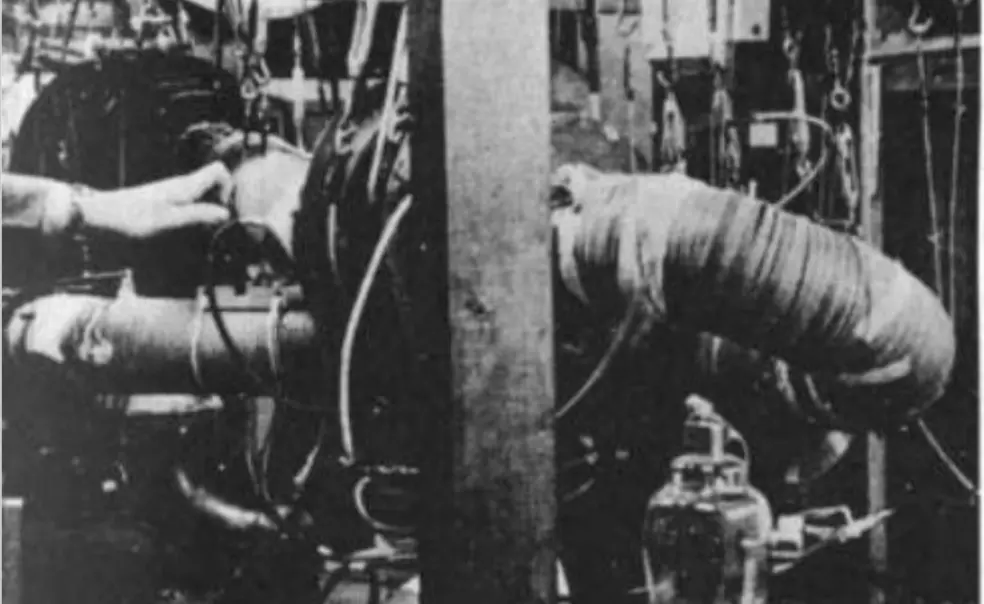
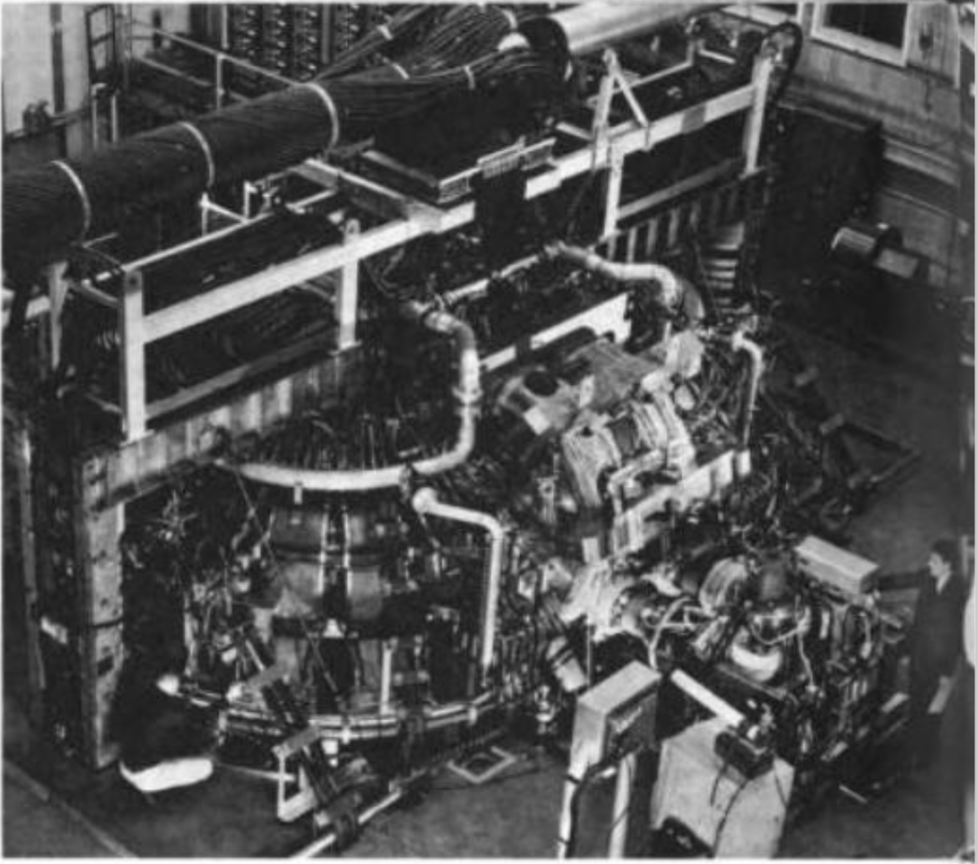
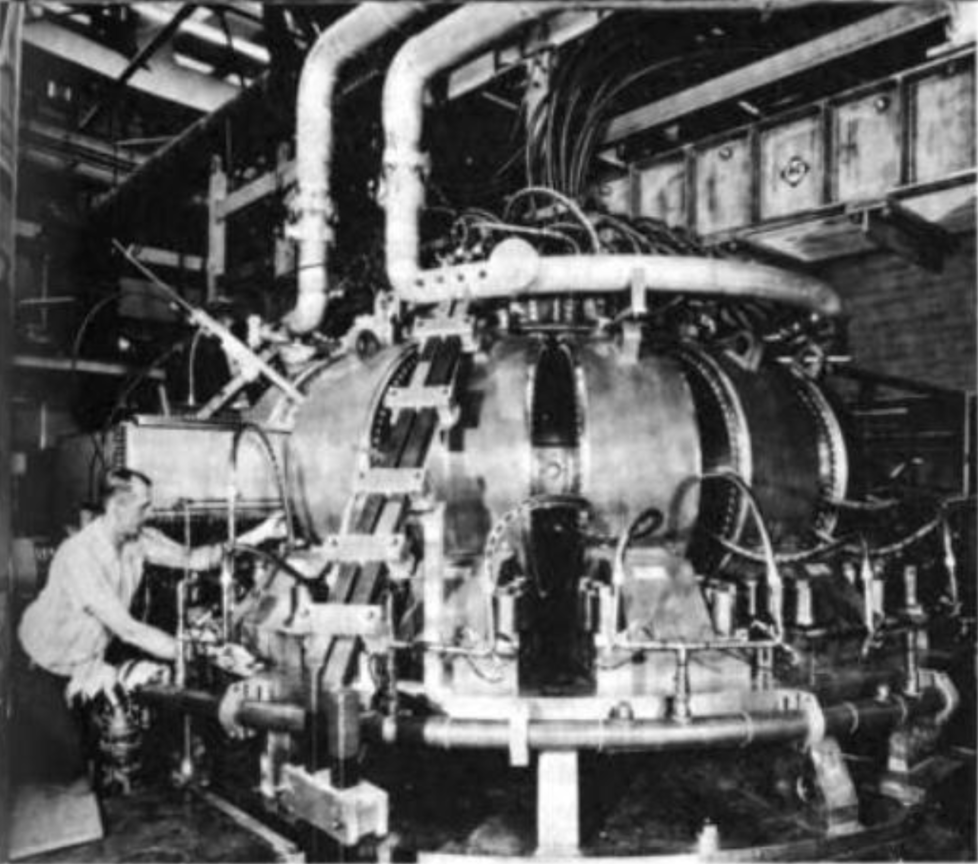
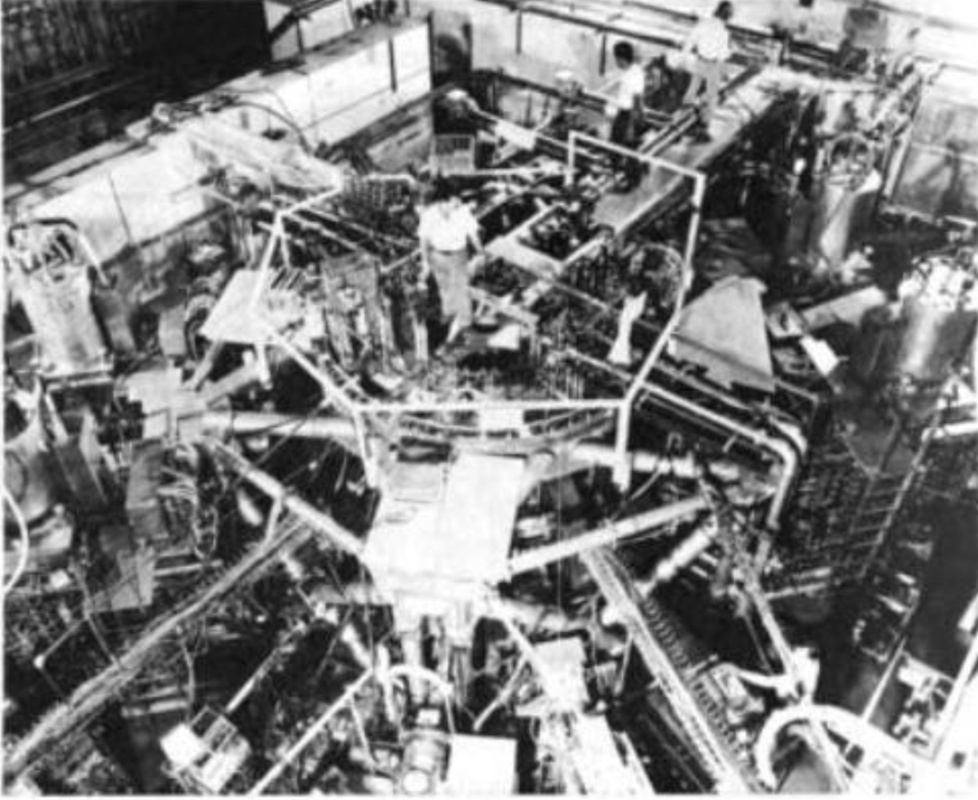
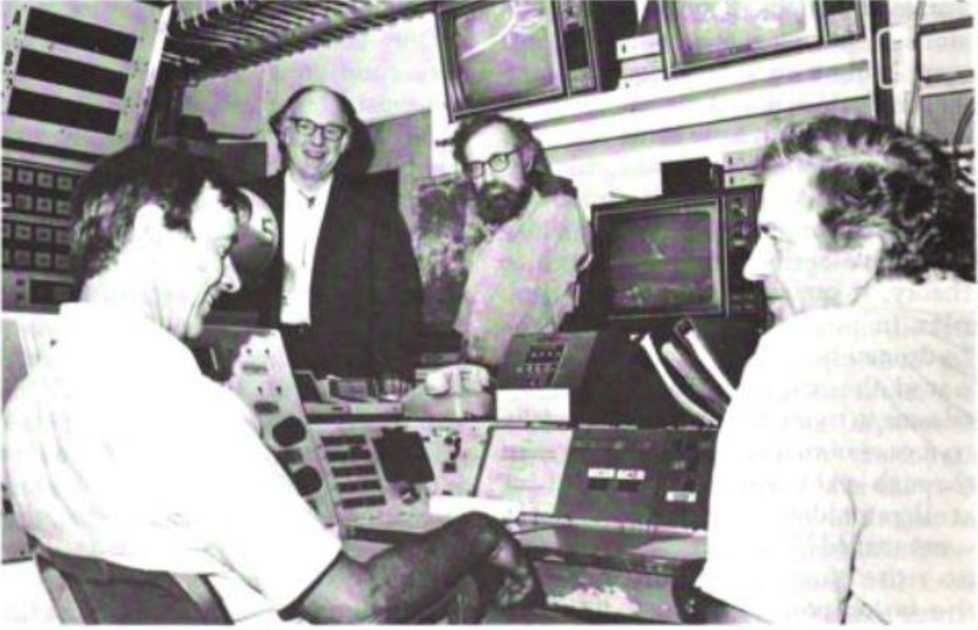
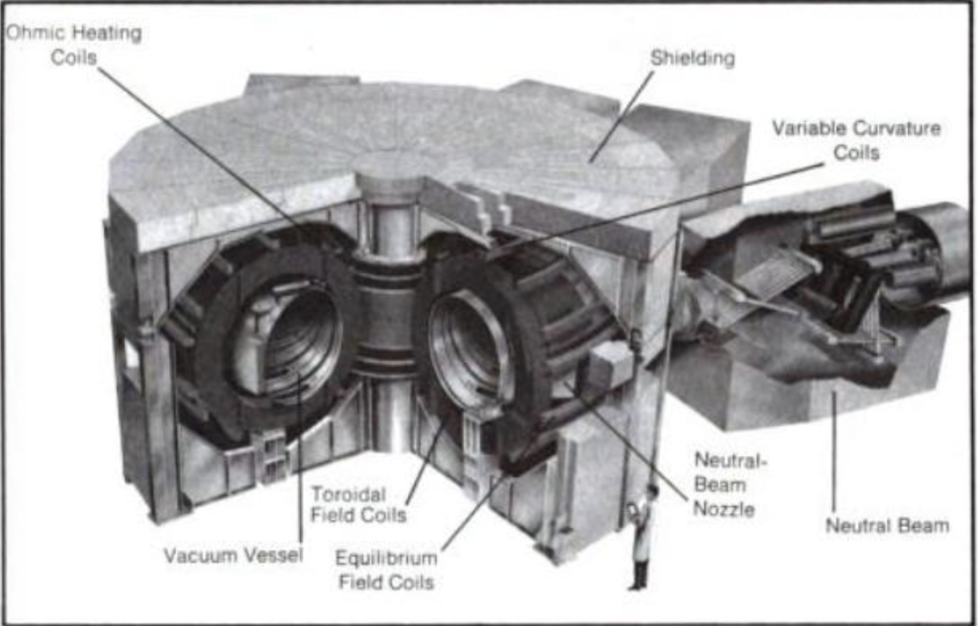










No responses yet